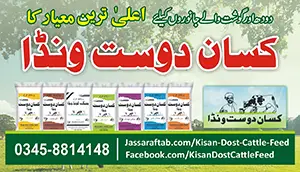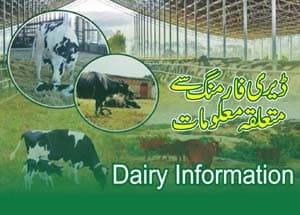
World Rhino Day | Rhinos Characteristics and Rhinoceros Conservation
World Rhino Day is celebrated to raise awareness about the five species of rhinoceros. The World Rhino Day has been celebrated internationally on September 22nd since 2011. This day aims to raise awareness about the Rhinoceros conservation and challenges they face in the wild, particularly poaching habitat loss due to Rhinoceros horn usage and other factors. Rhinos characteristics are unique in different species.
There are five species of rhinoceros. These species includes White Rhinoceros (Ceratotherium simum), Black Rhinoceros (Diceros bicornis), Indian Rhinoceros (Rhinoceros unicornis), Javan Rhinoceros (Rhinoceros sondaicus), Sumatran Rhinoceros (Dicerorhinus sumatrensis).
History of World Rhino Day
World Rhino Day was first initiated by WWF-South Africa in 2010. It was originally created to raise awareness about the plight of rhinoceros as poaching levels rose dramatically in the early 21st century for their horns. In 2011, this day gains international success. Lisa Jane Campbell from Chishakwe Ranch in Zimbabwe and Rhishja Larson worked together to make World Rhino Day 2011 an international success. Rhishja Larson is the creator and head of the organization Saving Rhinos in the USA and author of the blog, Rhino Horn is NOT Medicine.
However, Larson has taken a unique approach to advocating for the world’s rhinos. She believes that raising awareness against rhinos poaching may decrease poaching. Now, this day has become a focal point for rhino conservation efforts.
Rhinos Characteristics
Rhinoceroses belong to the family Rhinocerotidae. They are largest living, herbivorous land mammals. Only African and Asian elephants are taller at the shoulder than the rhinoceros. Rhinoceroses are known for their thick skin, which forms platelike folds, especially at the shoulders and thighs.
There are five species of rhinoceros. Each species has unique rhinos characteristics. Despite this, there are some common characteristics of Rhinoceroses. They are large animals. Their weight ranges from 800 kg to 3,600 kg (1,764 to 7,936 lbs) depending on the species. All rhinos are gray or brown in colour, including the white rhinoceros, which is paler than the others.
Rhinos have almost hairless skin. They have one or two horns on the upper surface of the snout. However, these horns are not true horns but are composed of keratin, a fibrous protein found in hair. Some species, like the White and Black Rhinoceros, have two horns, while others, like the Indian and Javan Rhinoceros, have one horn. Rhinos are herbivores, primarily grazing on grasses, leaves, fruits, and shoots, depending on the species.
Rhinoceros Horns Usage
Rhino horns have been historically used for a variety of purposes. Primary, horns used in traditional medicine in parts of Asia mainly China and Vietnam, and for dagger handles in Yemen and Oman, status symbols, and ornamental items. However, Rhinoceros Horns Usage has significantly contributed to the poaching crisis that endangers all rhino species. On the other hand, traditional Chinese Medicine claims that they have curative properties. However, science proves all this is based on a lie.
Successful Test tube baby of Rhino
Rhinoceros Conservation and World Rhino Day
All species of rhinos are under threat, primarily due to poaching and habitat loss. Two species, the Javan and Sumatran Rhinos, are critically endangered. Rhinoceros Conservation efforts focus on anti-poaching initiatives, habitat preservation, and breeding programs to ensure their survival. On the other hand, several organizations across the globe are working for the conservation of rhinos. These organizations include International Rhino Foundation, Save the Rhino, African Wildlife Foundation, and World Rhino Day.







16 Comments
Merely wanna remark that you have a very nice site, I love the pattern it actually stands out.
You can protect yourself and your ancestors by being cautious when buying medicine online. Some pharmaceutics websites operate legally and provide convenience, solitariness, rate savings and safeguards as a replacement for purchasing medicines. buy in TerbinaPharmacy https://terbinafines.com/product/omnicef.html omnicef
More peace pieces like this would make the web better. TerbinaPharmacy
This is the kind of enter I find helpful.
It’s arduous to search out knowledgeable people on this matter, but you sound like you realize what you’re speaking about! Thanks
I got good info from your blog
It’s exhausting to seek out knowledgeable folks on this subject, however you sound like you realize what you’re talking about! Thanks
Tham gia cộng đồng game thủ tại Go88 để trải nghiệm các trò chơi bài, poker phổ biến nhất hiện nay.
Với giao diện mượt mà và ưu đãi hấp dẫn, MM88 là lựa chọn lý tưởng cho các tín đồ giải trí trực tuyến.
苹果签名,苹果超级签平台,ios超级签平台ios超级签苹果企业签,苹果超级签,稳定超级签名
Đến với J88, bạn sẽ được trải nghiệm dịch vụ cá cược chuyên nghiệp cùng hàng ngàn sự kiện khuyến mãi độc quyền.
I do not even know how I ended up here, but I thought this post was great. I don’t know who you are but definitely you’re going to a famous blogger if you aren’t already 😉 Cheers!
Enjoyed looking through this, very good stuff, appreciate it.
搭载智能站群程序,自动化搭建与管理,为SEO项目提供核心驱动力。站群程序
kuwin sở hữu kho game đa dạng từ slot đến trò chơi bài đổi thưởng, mang đến cho bạn những giây phút giải trí tuyệt vời.
iwin – nền tảng game bài đổi thưởng uy tín, nơi bạn có thể thử vận may và tận hưởng nhiều tựa game hấp